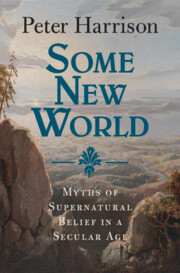2 - Languages of Belief
Published online by Cambridge University Press: 29 March 2024
Summary
This chapter traces the fortunes of our modern understanding of ‘belief’ which is deeply informed by its original uses in a religious context. It begins with an account of faith/belief (Greek: pistis) in early Christianity, showing how the primary meanings of the term related to trust rather than intellectual assent. In the medieval period, this social component of faith/belief was formalised in the conception of ‘implicit faith’, which enabled lay believers to affirm abstruse theological doctrines without the requirement of a full intellectual comprehension of what was being affirmed. While it is possible to speak of the propositional content of belief during this period, the identity of the faithful was established more by liturgical practice than assent to doctrinal propositions.
Keywords
- Type
- Chapter
- Information
- Some New WorldMyths of Supernatural Belief in a Secular Age, pp. 24 - 67Publisher: Cambridge University PressPrint publication year: 2024

